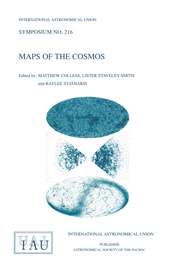No CrossRef data available.
Article contents
High-resolution, near-IR spectroscopy and imaging of the Egg and Rotten Egg nebulae (AFGL 2688 and OH 231.8+4.2)
Published online by Cambridge University Press: 25 May 2016
Abstract
Velocity-resolved 2.12 μm H2 maps of the Egg Nebula (AFGL 2688), obtained with the NOAO Phoenix spectrometer, elaborate on previous observations of large velocity gradients in molecular emission both along and perpendicular to the polar axis of the system. The measured gradients along the polar axis support the notion that the polar H2 emission regions are formed in shocks as fast, collimated winds collide with material ejected while the central star was still on the AGB. The kinematics of H2 emission along the equatorial plane, meanwhile, are consistent with a model combining spherical expansion with rotation about the polar axis, although a model invoking multiple outflow axes cannot be ruled out.
We also obtained the first direct near-infrared images of QX Pup, a Mira variable embedded within the evolved bipolar nebula OH 231.8+4.2. The inferred absolute K magnitude of the central Mira appears “normal” given its ∼ 700 day period, which is remarkable in light of its position at the heart of such an unusual object.
- Type
- Part 5. Non-Spherical Mass Loss, Binarity, Post-AGB Evolution
- Information
- Symposium - International Astronomical Union , Volume 191: Asymptotic Giant Branch Stars , 1999 , pp. 431 - 436
- Copyright
- Copyright © Astronomical Society of the Pacific 1999


